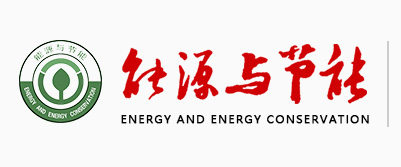202206
煤与木屑掺烧的燃烧特性与污染物排放规律
李春建1,曾澄光1,段小云1,江卓辉1,姜波1,王雨晴2,李浚杰2
(1. 广州中电荔新热电有限公司,广东 广州 511300;2. 华南理工大学电力学院,广东 广州 510640)
摘要: 生物质与煤耦合发电是减少煤炭消耗和污染物排放的有效手段。采用热重分析仪和固定床反应器研究了煤与
复合板木屑耦合燃烧特性及污染物排放规律。结果表明,当木屑的掺混比从10%增加到70%时,着火温度与燃尽温度逐
渐降低,综合燃烧特性指数提高了77.5%。随着木屑含量的增加,SO2 的转化率存在一定的波动,NO 的转化率逐渐降
低,HCl 的转化率呈先下降后上升的趋势。当木屑掺混比为20%时,HCl 转化率最低且SO2转化率也较低。通过对比实
验值与理论值发现,木屑与煤共燃还存在协同作用,掺混20%木屑时的协同作用最佳。
关键词: 煤;木屑;掺烧;燃烧特性;污染物排放
中图分类号: TK16 文献标志码: A 文章编号: 2095-0802-(2022)06-0006-04
Co-combustion Characteristics and Pollutant Emission Regularity of Coal and Sawdust
LI Chunjian1, ZENG Chengguang1, DUAN Xiaoyun1, JIANG Zhuohui1, JIANG Bo1, WANG Yuqing2, LI Junjie2
(1. Guangzhou Zhongdian Lixin Thermal Power Co., Ltd., Guangzhou 511300, Guangdong, China; 2. School of Electric Power
Engineering, South China University of Technology, Guangzhou 510640, Guangdong, China)
Abstract: Coupling power generation from biomass and coal is an effective way to reduce coal consumption and pollutant
emission. In this paper, a thermogravimetric analyzer and a fixed -bed reactor were used to study the coupling combustion
characteristics of coal and composite board sawdust and pollutant emission laws. The results showed that when the blending
amount of sawdust increased from 10% to 70%, the ignition temperature and burnout temperature gradually decreased, and the
comprehensive combustion characteristic index increased by 77.5%. As the content of sawdust increased, the conversion rate of
SO2 had certain volatility, the conversion rate of NO gradually decreased, and the conversion rate of HCl first decreased and then
rised. When mixed sawdust was 20%, the HCl conversion rate was the lowest and the SO2 conversion rate was also lower. By
comparing the experimental value and the theoretical value, it was found that the co-combustion of sawdust and coal had a
synergistic effect and the synergy effect was best when 20% sawdust was blended.
Key words: coal; sawdust; co-combustion; combustion characteristics; pollutant emission


